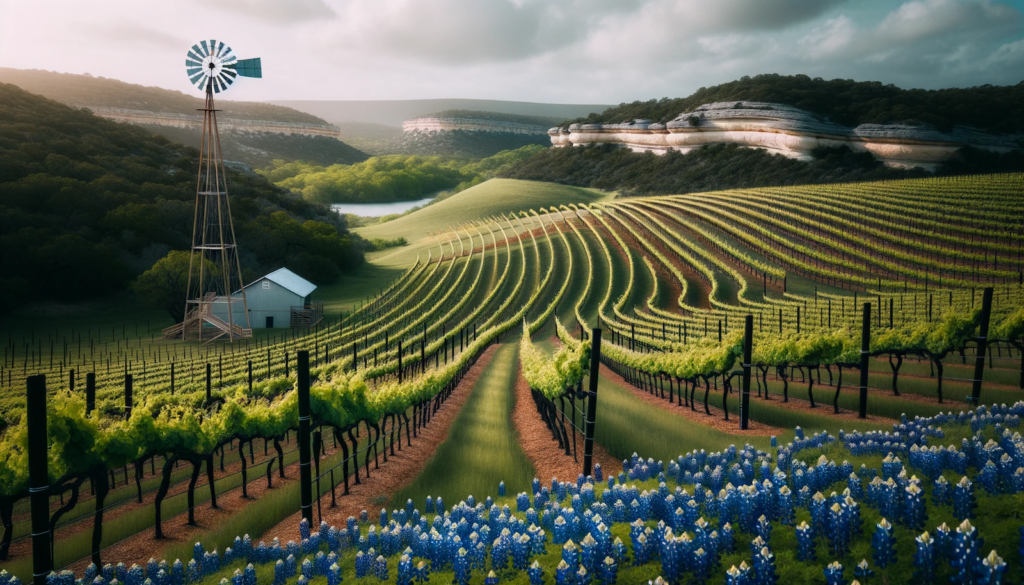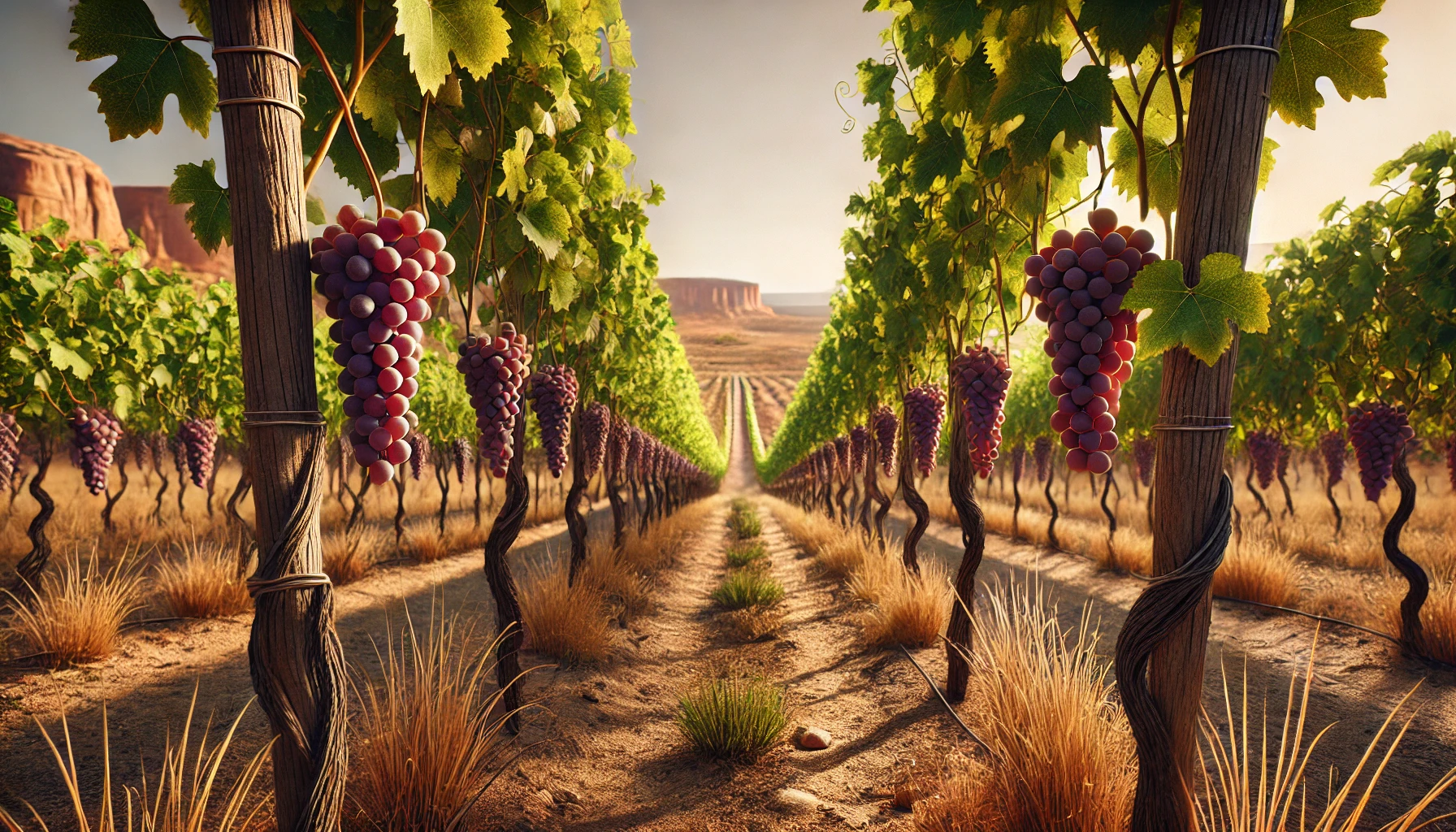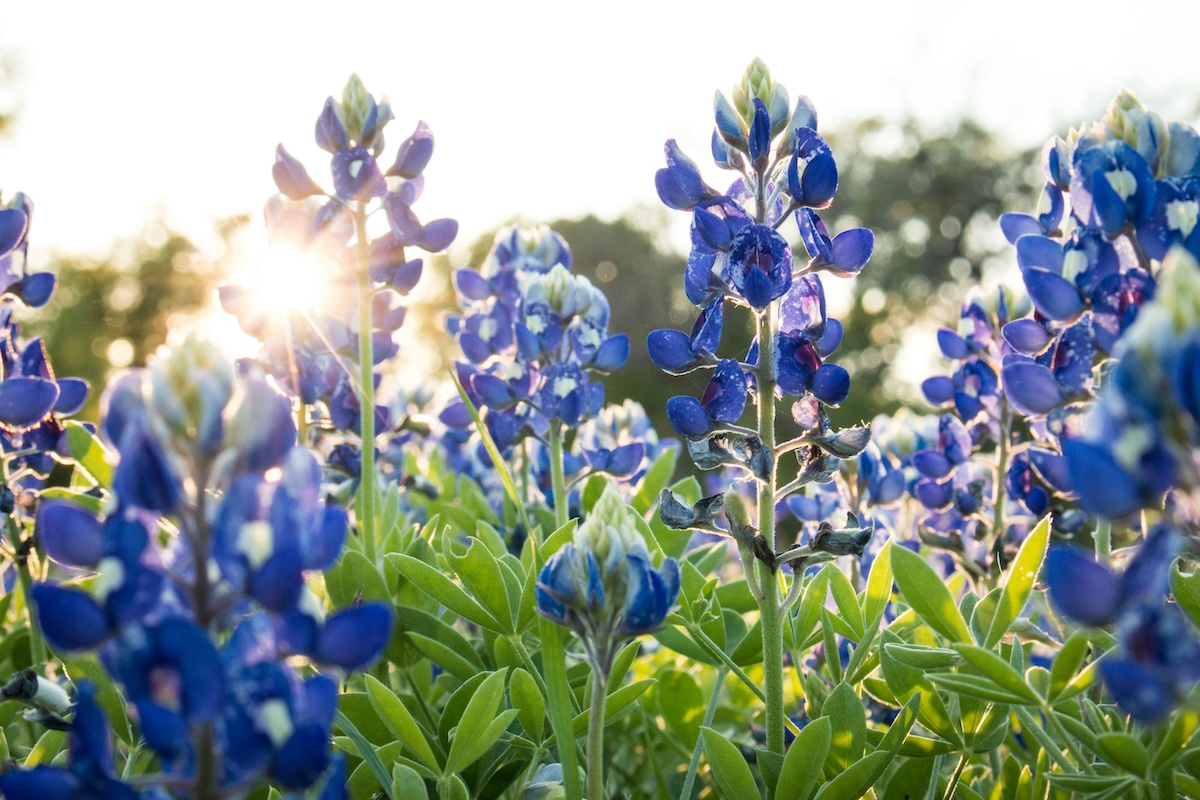
A Comprehensive Guide to Hill Country and Beyond
Texas is known for its vast open spaces, cowboy culture, and of course, its wine. Though it may not be the first place that comes to mind when thinking of wine regions, Texas has a rich history of wine production that dates back to the mid-1600s. Today, Texas has become a thriving wine destination, with several distinct regions that produce a wide range of varietals.
One of the most well-known wine regions in Texas is the Hill Country. Located just west of Austin, this region is known for its picturesque rolling hills, charming small towns, and of course, its wine. The Hill Country is home to over 50 wineries and vineyards, each with its own unique style and personality. Visitors can explore the region’s many tasting rooms, attend wine festivals and events, and even take a guided tour of the area’s wineries.
Beyond the Hill Country, Texas has several other wine regions worth exploring. These include the High Plains, where over 70% of the state’s wine grapes are grown, as well as the Gulf Coast and the Texas Davis Mountains. Each of these regions has its own unique climate, soil, and topography, which in turn produces a wide range of varietals and styles of wine. Whether you’re a seasoned wine connoisseur or just looking for a fun weekend getaway, Texas wine country has something for everyone.
The Texas Wine Landscape
Texas is the fifth-largest wine-producing state in the United States, with over 400 wineries and eight wine-growing regions. The state’s wine industry has grown significantly in recent years, with a focus on producing high-quality wines that showcase the unique terroir of the Lone Star State.
The most well-known wine region in Texas is the Hill Country, located in the central part of the state. The region is home to over 50 wineries and vineyards, producing a range of varietals, including Cabernet Sauvignon, Tempranillo, and Viognier. The region’s warm days and cool nights, combined with its rocky soil and limestone bedrock, create the perfect growing conditions for grapes.
Beyond the Hill Country, Texas has several other wine-growing regions, including the High Plains AVA, located in the northwest part of the state. The region is known for its high elevation and arid climate, producing grapes like Cabernet Sauvignon, Merlot, and Malbec.
The Gulf Coast region is another up-and-coming wine region in Texas, with a focus on producing wines that pair well with the region’s seafood cuisine. The area’s warm, humid climate and sandy soil are ideal for growing grapes like Blanc du Bois and Black Spanish.
Other wine regions in Texas include the North Texas AVA, located in the northeast part of the state, and the Texoma AVA, located in the north-central part of the state. Both regions are known for producing wines from hybrid grape varieties, like Champanel and Lomanto.
Overall, the Texas wine landscape is diverse and constantly evolving, with new wineries and vineyards popping up every year. Whether you’re a seasoned wine aficionado or a casual wine drinker, Texas wine country has something to offer everyone.
Hill Country: The Heart of Texas Wine
When it comes to wine in Texas, the Hill Country region is the heart of it all. Spanning across 22 counties, Hill Country offers a diverse landscape with over 50 wineries to explore. This region is known for its picturesque views, rolling hills, and vineyards that make for a perfect weekend getaway.
One of the most popular destinations in Hill Country is Fredericksburg. This charming town is home to over 10 wineries and tasting rooms, making it a must-visit for any wine enthusiast. Visitors can enjoy a variety of wines, including Tempranillo, Viognier, and Cabernet Sauvignon, while taking in the beautiful scenery.
Another notable area within Hill Country is the Texas Hill Country AVA. This American Viticultural Area covers over 9 million acres and is home to some of the best wineries in the state. The AVA is known for its warm days and cool nights, which provide the perfect environment for growing grapes.
Hye and Johnson City are also popular destinations within Hill Country. Hye is home to some of the oldest wineries in Texas, including William Chris Vineyards and Garrison Brothers Distillery. Johnson City, on the other hand, offers a more laid-back atmosphere with several wineries located in the downtown area.
Hill Country is conveniently located just a short drive from both Austin and San Antonio, making it an easy weekend trip for locals and visitors alike. With so many wineries to choose from, it’s no wonder that Hill Country has become a premier wine destination in Texas.
Distinguished Wineries in Hill Country
The Texas Hill Country is home to some of the most distinguished wineries in the state. Here are some of the top wineries to visit:
William Chris Vineyards
William Chris Vineyards is a boutique winery that produces high-quality wines that showcase the unique terroir of the Texas Hill Country. Their wines have won numerous awards, including gold medals at the San Francisco Chronicle Wine Competition and the Houston Livestock Show and Rodeo Wine Competition. The winery is known for its commitment to sustainable farming practices and its use of traditional winemaking techniques.
Fall Creek Vineyards
Fall Creek Vineyards is one of the oldest and most respected wineries in the Texas Hill Country. The winery was founded in 1975 and has since won numerous awards for its wines, including a gold medal at the Decanter World Wine Awards. Fall Creek Vineyards is known for its Bordeaux-style wines, which are made using traditional winemaking techniques and high-quality grapes.
Duchman Family Winery
Duchman Family Winery is a family-owned and operated winery that produces Italian-style wines using grapes grown in the Texas Hill Country. The winery is known for its commitment to sustainability and its use of organic farming practices. Duchman Family Winery has won numerous awards for its wines, including a gold medal at the San Francisco International Wine Competition.
Becker Vineyards
Becker Vineyards is one of the most popular wineries in the Texas Hill Country. The winery was founded in 1992 and has since won numerous awards for its wines, including a gold medal at the San Francisco Chronicle Wine Competition. Becker Vineyards is known for its award-winning Viognier and its use of sustainable farming practices.
Pedernales Cellars
Pedernales Cellars is a family-owned and operated winery that produces high-quality wines using grapes grown in the Texas Hill Country. The winery is known for its award-winning Tempranillo and its use of traditional winemaking techniques. Pedernales Cellars has won numerous awards for its wines, including a gold medal at the San Francisco International Wine Competition.
Southold Farm + Cellar
Southold Farm + Cellar is a small, family-owned winery that produces high-quality wines using grapes grown in the Texas Hill Country. The winery is known for its commitment to organic farming practices and its use of natural winemaking techniques. Southold Farm + Cellar has won numerous awards for its wines, including a gold medal at the TEXSOM International Wine Awards.
Kalasi Cellars
Kalasi Cellars is a boutique winery that produces small-batch wines using grapes grown in the Texas Hill Country. The winery is known for its commitment to sustainability and its use of traditional winemaking techniques. Kalasi Cellars has won numerous awards for its wines, including a gold medal at the San Francisco Chronicle Wine Competition.
Hye Winery
Hye Winery is a family-owned and operated winery that produces high-quality wines using grapes grown in the Texas Hill Country. The winery is known for its award-winning Cabernet Sauvignon and its commitment to sustainable farming practices. Hye Winery has won numerous awards for its wines, including a gold medal at the San Francisco Chronicle Wine Competition.
Beyond Hill Country: Exploring Other Texas Wine Regions
While the Hill Country is the most famous wine region in Texas, there are several other regions worth exploring. Each region has its own unique characteristics and produces different types of wine. Here are some of the other Texas wine regions to consider:
High Plains
The High Plains region is located in the northwest part of the state and is the second-largest wine region in Texas. It has a high elevation and a semi-arid climate, which makes it ideal for growing grapes. The region is known for producing bold and complex red wines, such as Cabernet Sauvignon and Tempranillo. Some of the wineries in this region include McPherson Cellars and Llano Estacado Winery.
West Texas
West Texas is a vast region that includes the Trans-Pecos and the Panhandle. It has a hot and dry climate, which makes it challenging to grow grapes. However, some wineries have succeeded in producing high-quality wines, such as the Val Verde Winery in Del Rio. West Texas is also home to the oldest winery in Texas, the Val Verde Winery, which was established in 1883.
North Texas
North Texas is a relatively new wine region that is located in the northern part of the state. It is known for producing crisp and refreshing white wines, such as Chardonnay and Viognier. Some of the wineries in this region include the Lost Oak Winery and the Homestead Winery.
Central Texas
Central Texas is a diverse region that includes the Texas Hill Country and the Austin area. It has a warm and dry climate, which makes it ideal for growing grapes. The region is known for producing bold and fruity red wines, such as Cabernet Sauvignon and Merlot. Some of the wineries in this region include the Becker Vineyards and the Fall Creek Vineyards.
Gulf Coast
The Gulf Coast region is located in the southeastern part of the state and includes the area around Houston. It has a humid and subtropical climate, which makes it challenging to grow grapes. However, some wineries have succeeded in producing high-quality wines, such as the Haak Vineyards and Winery in Santa Fe.
Mesilla Valley AVA
The Mesilla Valley AVA is located in the southern part of New Mexico, but it also includes a small part of West Texas. It has a high elevation and a dry climate, which makes it ideal for growing grapes. The region is known for producing bold and spicy red wines, such as Syrah and Zinfandel.
Texoma AVA
The Texoma AVA is located in the northern part of Texas, near the Oklahoma border. It has a humid and subtropical climate, which makes it challenging to grow grapes. However, some wineries have succeeded in producing high-quality wines, such as the Blue Ostrich Winery and Vineyard in Saint Jo.
Escondido Valley AVA
The Escondido Valley AVA is located in the southwestern part of Texas, near the border with Mexico. It has a dry and warm climate, which makes it ideal for growing grapes. The region is known for producing bold and fruity red wines, such as Cabernet Sauvignon and Merlot.
Davis Mountains
The Davis Mountains are located in the western part of Texas and are known for their rugged beauty. While the region is not officially recognized as a wine region, some wineries have started to produce wine in this area. The region has a high elevation and a dry climate, which makes it ideal for growing grapes. The wineries in this region include the Blue Mountain Vineyards and the Stone House Vineyard.
Overall, Texas has a diverse range of wine regions that produce a wide variety of wines. Whether you prefer bold and complex red wines or crisp and refreshing white wines, there is something for everyone to enjoy.
Understanding Texas Terroir
Terroir is a French term that refers to the environmental factors that influence the taste and quality of wine. Texas terroir is unique due to its diverse landscape and climate. Understanding the terroir of Texas wine regions is essential in appreciating the quality and flavor of Texas wines.
Climate
Texas has a warm climate with long, hot summers and short, mild winters. The climate varies across the state, with the Gulf Coast and East Texas being more humid and prone to rainfall. The Hill Country, on the other hand, has a drier climate with low humidity. The wide diurnal shift (temperature swing) between day and night allows the grapes to cool down at night and rest, helping achieve better retained acidity. The warm climate helps bring grapes to their full ripeness, resulting in rich, full-bodied wines.
Soil
Texas has a diverse range of soils, including limestone, granite, and sandy loam. The High Plains AVA is famous for its red sandy soils, which provide excellent drainage and are ideal for growing grapes. The Hill Country has a mix of limestone and granite soils, which are more alkaline and provide a unique minerality to the wines.
Elevation
Texas has a wide range of elevations, with some vineyards located at over 4,000 feet above sea level. The elevation plays a significant role in the terroir of Texas wines, affecting temperature, soil, and drainage. The higher elevation vineyards in Texas tend to produce more complex and nuanced wines.
AVAs
Texas has eight American Viticultural Areas (AVAs), which are designated wine grape-growing regions recognized by the federal government. Each AVA has its unique terroir, climate, and soil, which influence the flavor and quality of the wines produced in that region.
Texas Terroir
Texas terroir is unique, with a diverse range of soils, climates, and elevations. The combination of these factors results in wines that are rich, full-bodied, and have a unique minerality. Texas wines are known for their bold flavors, high acidity, and fruit-forward character.
Grape-growing
Texas is home to a variety of grape varieties, including Cabernet Sauvignon, Merlot, Tempranillo, and Viognier. Each grape variety has its unique characteristics, and the terroir of Texas wine regions influences the flavor and quality of the grapes grown. The grape-growing process in Texas is meticulous, with growers paying close attention to the soil, climate, and elevation to produce the best quality grapes.
In conclusion, understanding the terroir of Texas wine regions is essential in appreciating the quality and flavor of Texas wines. The diverse landscape and climate of Texas result in unique wines that are rich, full-bodied, and have a unique minerality. The combination of soil, climate, and elevation plays a significant role in the terroir of Texas wines, resulting in bold, fruit-forward wines that are a true reflection of the Lone Star State.
Texas Wine Tourism
Texas wine regions have become a popular destination for wine tourism, attracting visitors from all over the world. The beautiful scenery, diverse wine offerings, and friendly hospitality make Texas wine country an ideal place to explore and enjoy.
Visitors can experience the wine culture of Texas by visiting the numerous tasting rooms and wineries scattered throughout the state. Some of the most popular wine regions include the Hill Country, High Plains, and Gulf Coast. Each region has its unique wine offerings, and visitors can taste a variety of wines, from crisp whites to bold reds.
Houston and Dallas are two of the largest cities in Texas, and both offer easy access to the state’s wine regions. Visitors can take a day trip to the Hill Country or plan a weekend getaway to explore the wineries and vineyards in the area. Many wineries offer tours, tastings, and other activities, such as live music and food pairings.
Wine tourism is a growing industry in Texas, and many wineries have embraced the trend by offering a range of amenities and services to visitors. Some wineries have on-site restaurants, where visitors can enjoy a meal paired with their favorite wine. Others offer overnight accommodations, such as bed and breakfasts or guesthouses, providing a unique and immersive experience.
In conclusion, Texas wine regions are a must-visit destination for wine enthusiasts and tourists alike. With a range of wine offerings, beautiful scenery, and friendly hospitality, visitors can experience the unique wine culture of Texas. Whether you are a seasoned wine connoisseur or a casual wine drinker, there is something for everyone in Texas wine country.


